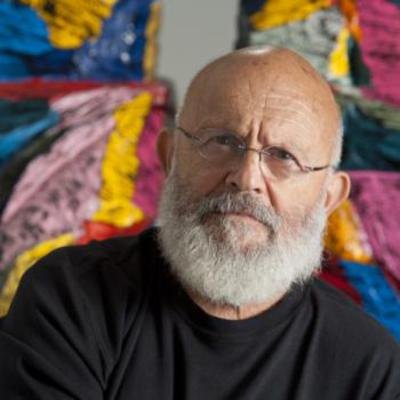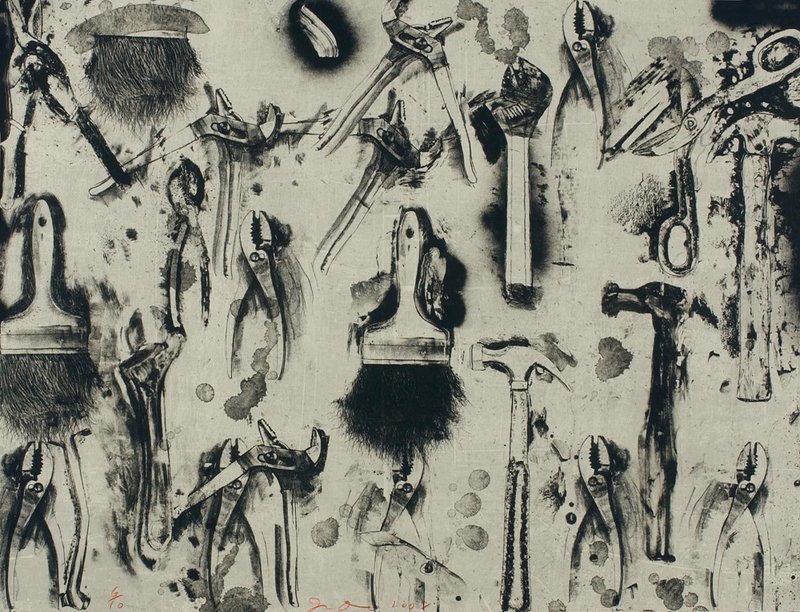Abstract Impressionism & Pop Art

Jim Dine is an American artist born on June 16th 1935, who works in many different fields. Specifically, Dine is a painter, a graphic artist, a sculptor and a poet. His work is most clearly associated with the Pop artist movement and the his works explore themes of identity, memory and the body.
However, although Dine’s work is often linked to the pop art movement (his work having been displayed alongside Roy Lichtenstein and Andy Warhol’s), Dine himself rejects this categorization. On the subject of the categorization of his work he said
“I would have been quite pleased to have been a pop artist; I was very involved with pop art and with those guys. But let’s face it, I wasn’t one. I used some popular imagery, objects more than anything else. But I wasn’t glorifying consumerism, nothing like that.””
More than anything, Dine feels that his work is more closely connected to the works of Robert Rauschenberg’s or Jasper Johns‘ Neo-Dada art. Dine states that his work questions the authority and influence of iconic symbols, rather than celebrate them as most pop art does.

The imagery which Dine probably refers to are his common depictions of cartoon hearts, bathrobes and utilitarian tools. In this works Dine explores memories and identities, through his depiction of everyday objects which speak to every viewer with their familiarity. This way, the subject is easily recognised and digested by the reader, but also the subject is imbued with a deeper sense of meaning which is unique to every viewer, as their understanding of the subject is unique.

Dine’s work evolved in conjunction to conceptual art, both readily influencing each other. Dine’s work with repetition (especially with is household objects) is a good example of this. The repetition of objects creates a new understanding of the everyday object. The object is worthy enough for the artist to repeat its image, to study it. From this, an entirely new meaning in injected into his art.

I actually did know about Dine before this project, though I was not aware of his influence in pop and conceptual art. I had only been exposed to his work of utilitarian tools during a high school art class where we were meant to mimic his style. Now having seen some of his other works, I can say in confidence that his work with tools is definitely my favourite. I especially enjoy his implementation of lost edges, and how the tools appear to melt into their backgrounds.

Sources
- https://www.theartstory.org/artist-dine-jim.htm
- https://www.britannica.com/biography/Jim-Dine
- http://www.artnet.com/artists/jim-dine/
Photo Sources (in order)
- https://www.google.ca/search?q=jim+dine&rlz=1C1CHBD_en-GBCA752CA752&source=lnms&tbm=isch&sa=X&ved=0ahUKEwitve3l9fDeAhX9GDQIHZaQCtsQ_AUIDigB&cshid=1543196292575000&biw=1280&bih=658#imgrc=mAco7eznsDHtPM:
- http://www.wetterlinggallery.com/artists/jim-dine#At%20Sea,%202014
- http://www.mraart.org/jim-dine.html
- https://www.google.ca/url?sa=i&source=images&cd=&cad=rja&uact=8&ved=2ahUKEwicrtTE9_DeAhUgwcQHHf9dCk8QjRx6BAgBEAU&url=https%3A%2F%2Fwww.artspace.com%2Fjim_dine%2Ftools-in-the-earth&psig=AOvVaw1Np2-X6uHvr0qEvjVQszw6&ust=1543282695046458
- https://www.google.ca/url?sa=i&source=images&cd=&cad=rja&uact=8&ved=2ahUKEwjH9cy29vDeAhVkITQIHQ-MCD8QjRx6BAgBEAU&url=http%3A%2F%2Fmarkmcleod.org%2Fwp_clevelandstateart%2F2013%2F09%2F30%2Fjim-dine%2Fjim_dine_de_ten_winter_tools%2F&psig=AOvVaw1Np2-X6uHvr0qEvjVQszw6&ust=1543282695046458